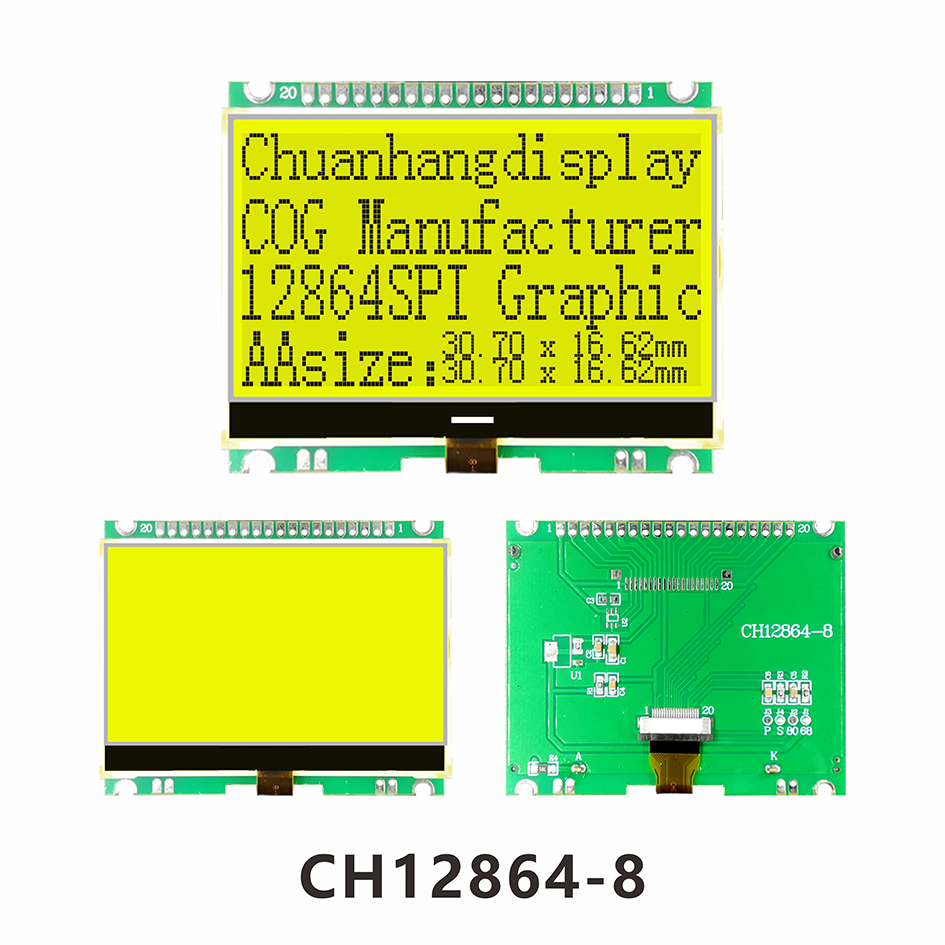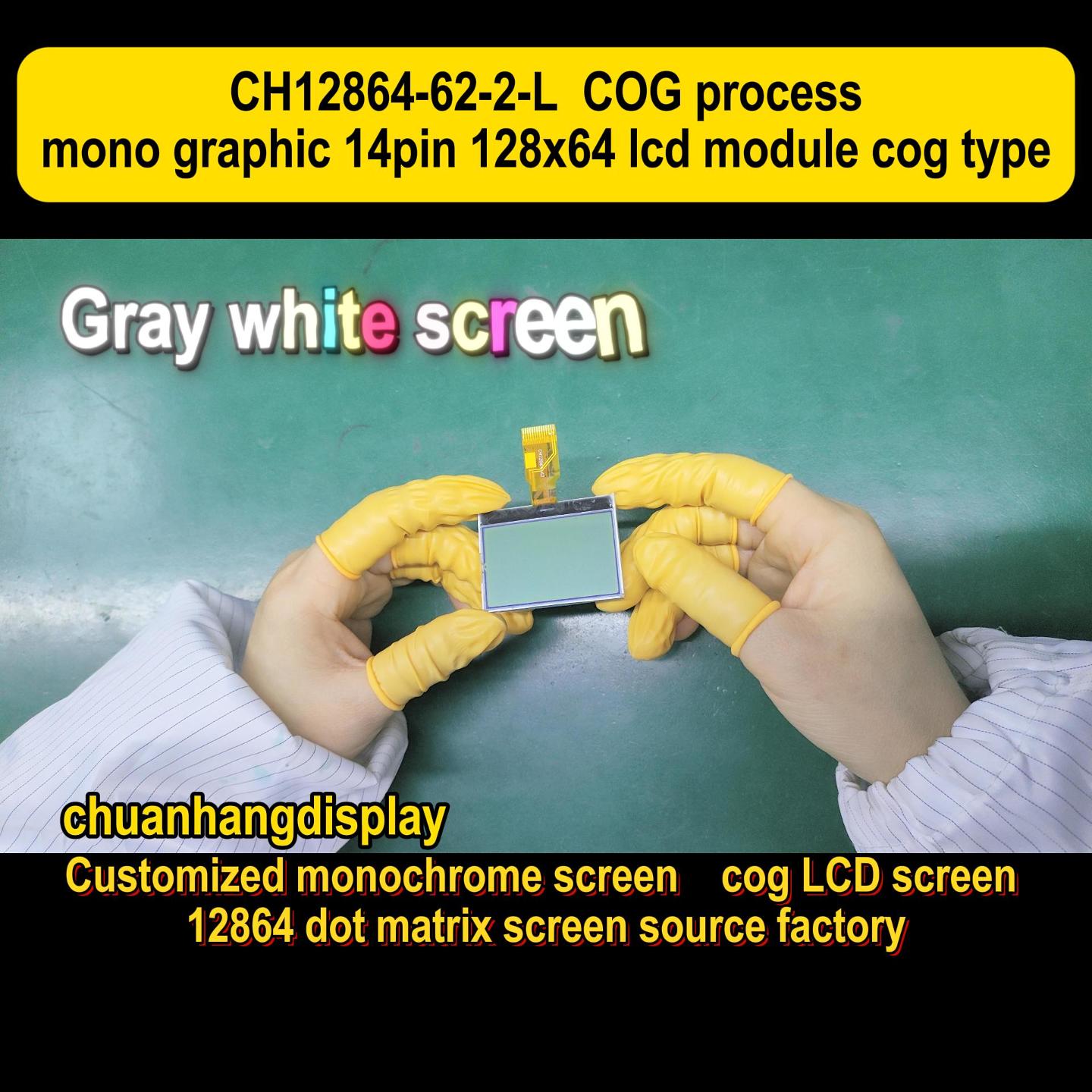In today's digital world, LCD display screens are everywhere—from smartphones and televisions to car dashboards and industrial equipment. These screens have become an integral part of our daily lives, offering vibrant visuals and reliable performance. But what exactly is an LCD display screen, and why is it so popular? In this article, we will dive deep into the world of LCD technology, answering five essential questions that will help you understand its workings, benefits, and applications. Whether you're a tech enthusiast or a casual user, this guide will provide valuable insights into how LCD display screens function and why they remain a top choice in various industries. Plus, we'll highlight how brands like Chuanhang Display contribute to advancing this technology. By the end, you'll have a comprehensive understanding of LCD display screens, empowering you to make informed decisions.

An LCD display screen, short for Liquid Crystal Display, is a flat-panel technology that uses liquid crystals to produce images. These crystals don't emit light directly; instead, they rely on a backlight source, typically LEDs, to illuminate the screen. The basic structure of an LCD display screen includes layers of polarized glass, liquid crystal molecules, and color filters. When an electric current passes through the liquid crystals, they align to control the light passing through, creating pixels that form images. This process allows for precise control over brightness and color, resulting in sharp, energy-efficient displays.
The working principle of an LCD display screen involves manipulating light through polarization. As light from the backlight passes through the liquid crystal layer, its orientation changes based on the applied voltage. By adjusting this voltage, the LCD display screen can block or allow light to pass through specific pixels, combined with color filters to produce a full spectrum of hues. This technology enables LCD display screens to deliver consistent performance in various lighting conditions, making them ideal for everything from indoor monitors to outdoor kiosks. Brands like Chuanhang Display have refined this process, offering high-quality LCD display screens with enhanced clarity and durability for diverse applications.
LCD display screens come in several types, each designed for specific uses and performance levels. The most common variants include Twisted Nematic (TN), In-Plane Switching (IPS), and Vertical Alignment (VA) panels. TN LCD display screens are known for their fast response times and affordability, making them popular in gaming monitors and budget devices. However, they often suffer from limited viewing angles and color accuracy compared to other types.
IPS LCD display screens, on the other hand, offer superior color reproduction and wider viewing angles, thanks to their horizontal crystal alignment. This makes them a favorite for professional graphics work, smartphones, and high-end televisions. VA LCD display screens strike a balance between TN and IPS, providing better contrast ratios and deeper blacks, which is ideal for home entertainment systems. Additionally, advanced versions like OLED-like LCDs are emerging, but traditional LCD display screens remain dominant due to their cost-effectiveness and reliability. Companies like Chuanhang Display specialize in producing a range of these LCD display screens, ensuring that consumers have options tailored to their needs, whether for consumer electronics or industrial displays.
LCD display screens offer numerous benefits that have cemented their place in the market. One key advantage is their energy efficiency; since they rely on a backlight rather than self-emitting pixels, they consume less power than technologies like plasma or older CRT displays. This makes LCD display screens eco-friendly and cost-effective for long-term use. They also produce minimal heat and have a slim profile, allowing for sleek designs in devices like laptops and tablets. Moreover, LCD display screens provide excellent image stability with no flicker, reducing eye strain during extended use.
However, LCD display screens have some drawbacks. One common issue is their limited contrast ratio compared to OLED screens, which can result in less vibrant blacks and shadows. The reliance on a backlight can also lead to backlight bleeding, where light leaks around the edges, affecting image quality. Additionally, LCD display screens may have slower response times in some models, causing motion blur in fast-paced videos or games. Despite these disadvantages, ongoing innovations from manufacturers like Chuanhang Display are addressing these challenges, such as incorporating local dimming and improved panel technologies to enhance the performance of LCD display screens.

LCD display screens are incredibly versatile, finding applications across multiple industries. In consumer electronics, they are the backbone of devices like smartphones, tablets, and televisions, providing users with clear and interactive interfaces. For instance, many modern smart TVs use advanced LCD display screens to deliver high-definition content with vibrant colors. In the automotive sector, LCD display screens are integrated into dashboards for navigation, entertainment, and vehicle diagnostics, enhancing driver convenience and safety.
Beyond consumer goods, LCD display screens play a crucial role in medical equipment, such as patient monitors and diagnostic tools, where accuracy and reliability are paramount. They are also widely used in retail for digital signage and point-of-sale systems, helping businesses engage customers with dynamic displays. Industrial applications include control panels and machinery interfaces, where durable LCD display screens from brands like Chuanhang Display withstand harsh environments. This widespread use highlights the adaptability of LCD display screens, driven by their affordability, longevity, and consistent performance in various settings.
Selecting the perfect LCD display screen depends on several factors, including intended use, budget, and technical specifications. First, consider the resolution; for tasks like video editing or gaming, a higher resolution (e.g., 4K) in an LCD display screen ensures sharper images. Refresh rate is another critical aspect—gaming or action-oriented applications benefit from screens with 120Hz or higher to reduce motion blur. Additionally, panel type matters: if color accuracy is vital, an IPS LCD display screen is preferable, while a TN panel might suffice for basic computing.
Other considerations include screen size, connectivity options (like HDMI or USB-C), and durability features such as anti-glare coatings or rugged designs for outdoor use. It's also wise to evaluate the brand reputation; for example, Chuanhang Display offers reliable LCD display screens with warranties and customer support, ensuring long-term satisfaction. By assessing these elements, you can find an LCD display screen that meets your specific requirements, whether for home entertainment, professional work, or industrial applications. Remember, reading reviews and comparing models can further guide your decision, helping you invest in a quality LCD display screen that delivers optimal performance.
In summary, LCD display screens are a foundational technology that continues to evolve, offering a blend of efficiency, versatility, and affordability. From understanding their basic workings to exploring different types and applications, we've covered key aspects that demonstrate why LCD display screens remain a top choice in today's market. While they have some limitations, advancements from companies like Chuanhang Display are pushing the boundaries, making these screens even more reliable for various uses. As you consider your next display purchase, keep these insights in mind to make an informed choice. Ultimately, the LCD display screen is more than just a component—it's a gateway to enhanced digital experiences in our interconnected world.
Q1: What does LCD stand for in an LCD display screen?
A1: LCD stands for Liquid Crystal Display. It refers to a technology that uses liquid crystals and a backlight to produce images on a screen, commonly found in devices like TVs, monitors, and smartphones.
Q2: How long does an LCD display screen typically last?
A2: An LCD display screen usually has a lifespan of 30,000 to 60,000 hours of use, which translates to about 10-20 years under normal conditions. Factors like brightness settings and environmental conditions can affect this duration.
Q3: Can LCD display screens be repaired if they get damaged?
A3: Yes, many issues with LCD display screens, such as dead pixels or backlight failures, can be repaired by professionals. However, severe physical damage like cracked panels often requires replacement, so it's best to consult a technician or brands like Chuanhang Display for support.
Q4: Are LCD display screens better than OLED screens?
A4: It depends on the application. LCD display screens are generally more affordable and energy-efficient, with less risk of burn-in, making them great for general use. OLED screens offer superior contrast and blacks but are pricier and may suffer from longevity issues. For most users, LCD display screens provide a reliable balance of performance and cost.
Q5: How can I clean my LCD display screen safely?
A5: To clean an LCD display screen, use a soft, lint-free cloth slightly dampened with water or a specialized screen cleaner. Avoid harsh chemicals, excessive pressure, or spraying liquid directly on the screen to prevent damage. Gently wipe in a circular motion for best results.
This article has provided a detailed overview of LCD display screens, covering their functionality, types, pros and cons, applications, and selection tips. If you have more questions, feel free to explore products from trusted brands like Chuanhang Display for quality options.